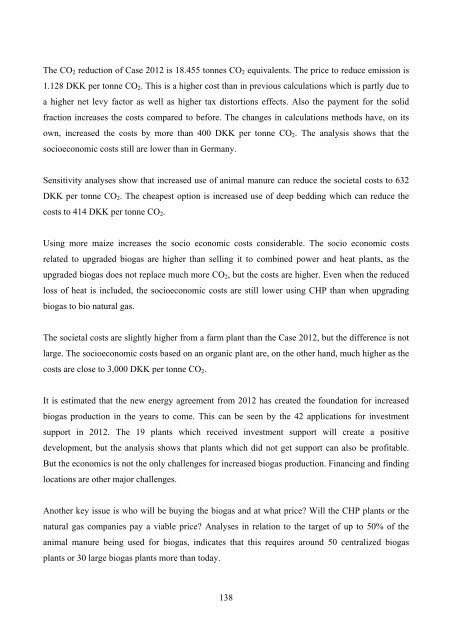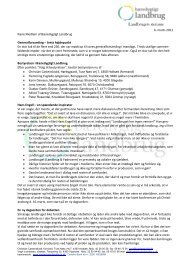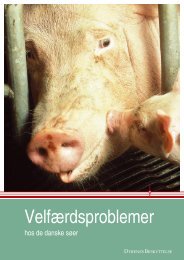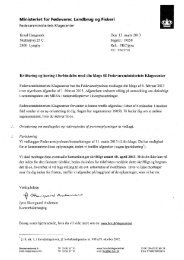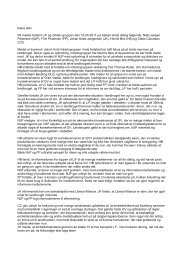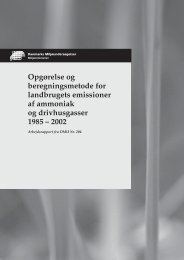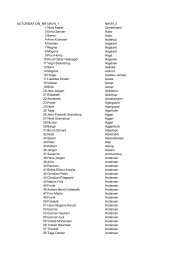Se rapporten her - Sickpigs.dk
Se rapporten her - Sickpigs.dk
Se rapporten her - Sickpigs.dk
You also want an ePaper? Increase the reach of your titles
YUMPU automatically turns print PDFs into web optimized ePapers that Google loves.
The CO 2 reduction of Case 2012 is 18.455 tonnes CO 2 equivalents. The price to reduce emission is1.128 DKK per tonne CO 2 . This is a hig<strong>her</strong> cost than in previous calculations which is partly due toa hig<strong>her</strong> net levy factor as well as hig<strong>her</strong> tax distortions effects. Also the payment for the solidfraction increases the costs compared to before. The changes in calculations methods have, on itsown, increased the costs by more than 400 DKK per tonne CO 2 . The analysis shows that thesocioeconomic costs still are lower than in Germany.<strong>Se</strong>nsitivity analyses show that increased use of animal manure can reduce the societal costs to 632DKK per tonne CO 2 . The cheapest option is increased use of deep bedding which can reduce thecosts to 414 DKK per tonne CO 2 .Using more maize increases the socio economic costs considerable. The socio economic costsrelated to upgraded biogas are hig<strong>her</strong> than selling it to combined power and heat plants, as theupgraded biogas does not replace much more CO 2 , but the costs are hig<strong>her</strong>. Even when the reducedloss of heat is included, the socioeconomic costs are still lower using CHP than when upgradingbiogas to bio natural gas.The societal costs are slightly hig<strong>her</strong> from a farm plant than the Case 2012, but the difference is notlarge. The socioeconomic costs based on an organic plant are, on the ot<strong>her</strong> hand, much hig<strong>her</strong> as thecosts are close to 3,000 DKK per tonne CO 2 .It is estimated that the new energy agreement from 2012 has created the foundation for increasedbiogas production in the years to come. This can be seen by the 42 applications for investmentsupport in 2012. The 19 plants which received investment support will create a positivedevelopment, but the analysis shows that plants which did not get support can also be profitable.But the economics is not the only challenges for increased biogas production. Financing and findinglocations are ot<strong>her</strong> major challenges.Anot<strong>her</strong> key issue is who will be buying the biogas and at what price? Will the CHP plants or thenatural gas companies pay a viable price? Analyses in relation to the target of up to 50% of theanimal manure being used for biogas, indicates that this requires around 50 centralized biogasplants or 30 large biogas plants more than today.138


